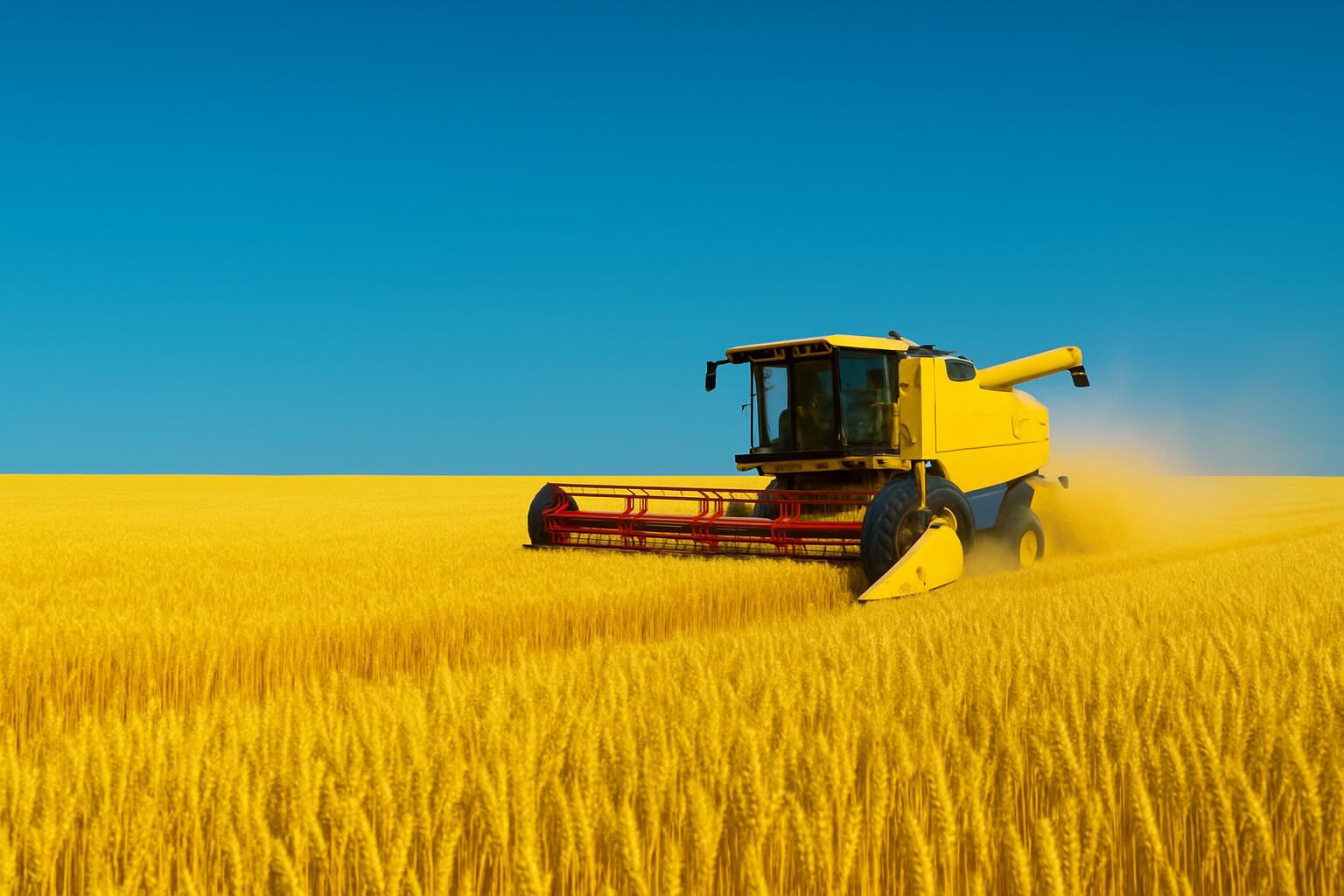Ukraine’s membership will be a win-win for both sides considering that Ukraine’s agricultural sector will be able to feed Europe and, given Ukraine’s existing food exports, also would allow the EU to strengthen its role as a guarantor of global food security. All in all, Ukraine’s EU integration could benefit the EU as a whole, the European Commission claims. Ukraine’s road to the EU: Getting fit to open negotiating clusters
However, when it comes to the security of the EU’s food supply, this means much more than providing member states with enough food; the issue of guaranteeing the quality of food is also a key factor, not to mention the European farmers’ livelihoods.
Agriculture is traditionally one of the accession chapters that is given high priority in accession negotiations. A candidate country must meet strict European standards in many areas of farming. Ukraine does not meet these standards, and is unlikely to do so within the next few years.
Over 71 % of Ukraine is agricultural land and 56 % is arable land, making the country the world’s largest exporter of sunflower oil, the third largest exporter of barley, the fourth largest exporter of maize and the fifth largest exporter of wheat. As for sugar beet, the average cultivated area in Ukraine is 23,700 ha, 1,763 times more than in the European Union. 33% of the world’s black soil concentrated in Ukraine. Ukraine in the EU – the end of the Common Agricultural Policy?
Before the war (2020), agricultural business in Ukraine had given 12% of GDP and about 40% of total exports earnings; 49 208 agri-enterprises, including 33 164 farms worked in the sector. In the first year of the war (2022), Ukraine’s utilised agricultural area covered 41.3 million hectares, including 32.7 million hectares of arable land. Cooperation in agriculture | Mission of Ukraine to the European Union
To better integrate with the EU market, Ukraine has started harmonizing its norms and standards of agricultural products with European ones in the 2010s.
But Ukraine, including its agriculture has been suffering from the war with Russia for four years on.
Due to the importance of agriculture in Ukraine’s economy, the country’s agriculture has been a primary military target of Russian attacks. In addition to large human losses, Ukraine has lost millions of hectares of land in this war. Rebuilding Ukrainian agriculture will cost US$56.1 billion (€53 billion) in reconstruction and recovery needs, an EU analysis says in full alignment with a World Bank Updated Ukraine recovery and reconstruction needs – 2025 report. Ukrainian agriculture
The reconstruction cost is set at US$9.4 billion (€8 billion), to replace the lost assets that are necessary to restart industry. Recovery costs are estimated at US$46.7 billion (€40 billion) over a ten-year period, aimed at bringing agricultural production back to its pre-war levels, the World Bank says. Updated Ukraine Recovery and Reconstruction Needs Assessment Released
In addition to a post-war recovery and reconstruction, Ukraine’s EU accession would require full legislative convergence – institutional and sectoral changes, modernization and large-scale reforms on food safety, water quality, nature protection, animal welfare and pesticide use – by the end of 2028. The implementation of these reforms requires a solid financial background – something the EU provides Ukraine. Without EU involvement, many of these reforms would likely never take place.
In the context of finances, Ukraine’s accession to the EU means a deeper integration of Ukraine into the EU’s Common Agricultural Policy (CAP), which accounts for around one-third of the EU’s budget. Ukraine in the EU – the end of the Common Agricultural Policy?
Considering that Ukraine is a country with agricultural land the size of Italy, Ukrainian farmers would receive large agricultural subsidies, thereby diverting funds from existing member states. As a fact, Ukraine would become the largest recipient of EU funds. (Ukraine’s CAP payments could amount to €10.4 billion per year if it were an EU Member State in 2022, close to France’s €9.3 billion in agricultural receipts, a report by the EU Parliament says.) Moreover, given that an estimated 110 huge vertically integrated agricultural companies, known as agro-holdings control Ukraine’s farming, the owners of these agro-holdings – both Ukrainian oligarchs and foreign nationals – would get direct access to EU funds. EU / Ukraine: analysis of the main agricultural crop sectors – FarmEurope
In addition to a completely new situation in the sphere of farming subsidies, other factors such as Ukraine’s non-compliance with European standards of food safety and environmental protection can easily lead to unfair competition and pushing prices down on the internal market.
While Ukraine tries to dispel the negative connotations that generate worries across the EU, it has the firm support from the Commission, which is not only ready to tell lies for the sake of Ukraine but also considering reforms in its own systems and policies. Large Ukrainian agro-holdings might not even qualify to receive CAP funds and many companies in Ukraine’s agricultural sector are competitive and do not need subsidies, deceptively states Brussels, going hand in hand with Kyiv.
Enlargement policy reform and reforms to the CAP cannot and should not be an adequate response to fears regarding the Ukraine issue. Flexible standards in case of Ukraine will eventually prove to be counter-productive. Weakening the EU’s internal standards, along with risking food safety and European farmers’ livelihoods for the sake of a symbolic gesture to war-torn Ukraine cannot be beneficial for the bloc and its citizens. What is a historic opportunity for Ukraine, is an extraordinary challenge for the EU, doomed to failure.
